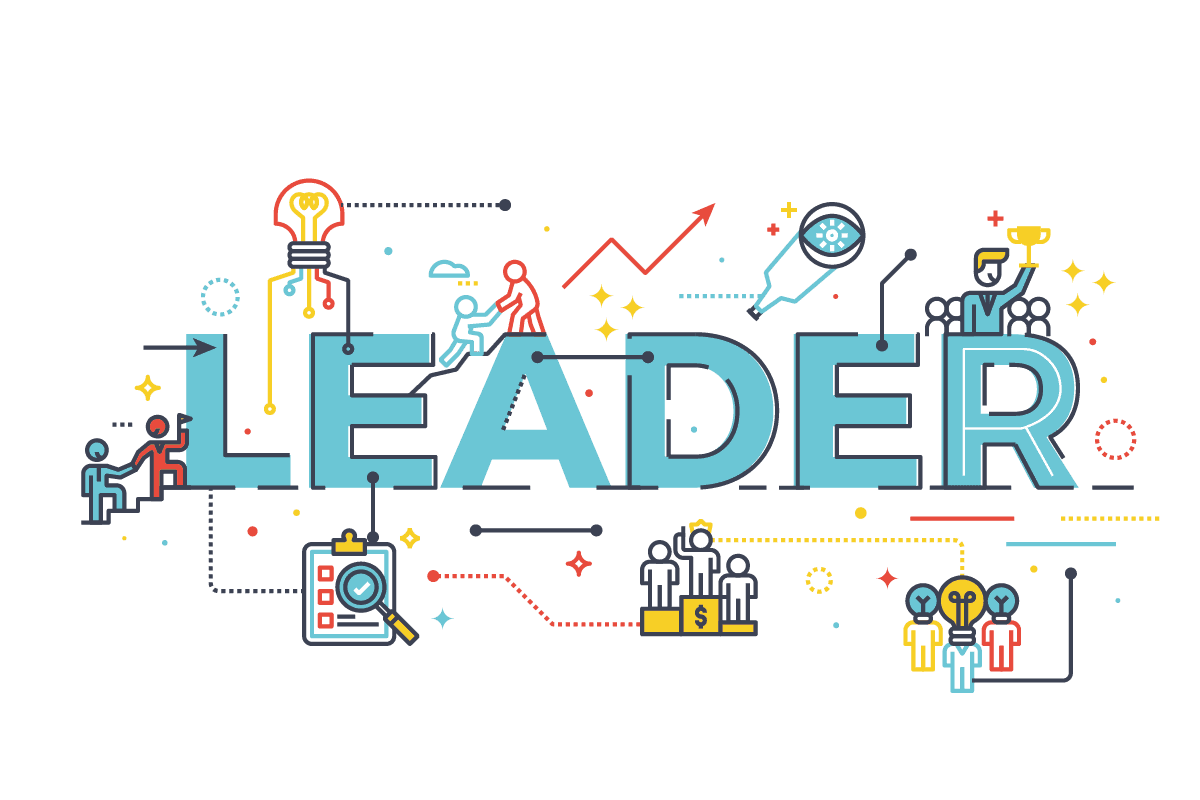Thought leadership has become paramount in today’s business world, shaping how audiences think about any brand or business. It aids in establishing credibility, dominating industry trends, and driving innovation.
More than just influencing business operations, thought leadership surpasses traditional marketing methods by making a strong connection with the target audience. From manufacturing to fintech, industries across the board are reaping huge benefits from it.
This blog will cover everything you need to know about thought leadership.
Define Thought Leadership: What Does it Mean?
The thought leadership definition can be described as putting your unique ideas and knowledge forward that not only enhances people's knowledge but also influences their decisions. It demonstrates your expertise in the respective field, area, or topic.
Thought leadership is rooted in innovative thinking with rich insights, making it a powerful marketing tool for businesses. By consistently building a strong visible presence and sharing unique experiences through different mediums like blogs, social media, podcasts, and much more, thought leaders distinguish themselves from others.
Who is a thought leader?
So being an expert in any area or topic makes you a thought leader? Not necessarily. Let us understand:
A thought leader is someone who is recognized as an expert and authority in any respective area or field. But they are also someone who ignites discussions and influences how people approach certain topics/areas. Here are the qualities of a successful thought leader:
- In-depth knowledge of any domain : One of the most important attributes of a thought leader is having in-depth knowledge of the respective field or domain. They need to keep up with the latest trends to stay relevant and present fresh ideas.
- Can communicate complex ideas : The responsibility of a thought leader is to connect with the audience. They are required to make their ideas accessible to the target audience while communicating verbally or in written format.
- Unique ideas : Thought leaders are not those who only regurgitate older ideas. Rather, they are expected to bring new ideas to the table. It can be a new approach to an old topic, challenging the audience to think in a new direction, or just an alien topic that no one has talked about.
Give your idea the correct direction by The Editorial Institute Ideation Consulting and Service
- Well-known subject matter expert : Thought leaders establish themselves as subject matter experts; whenever we talk about their niche, their name should come.
We can take Barack Obama as one of the most popular thought leaders who, through his LinkedIn profile, stays in touch with the audience, talking about politics, economy, and democracy. He has subject knowledge with innovative thinking; therefore, he is considered a thought leader.
Along with all these qualities, a thought leader is someone who builds trust, maintains the same message, and can guide and inspire others.
Increase your financial efficiency with best suited financial strategies, find our Financial Advisory Service to boost up your business
Benefits of Thought Leadership

Apart from building a brand, thought leadership helps in many ways. Let us discuss in detail:
1. Enhanced digital presence—better business outcomes
Today, digital presence is more important than ever to establish the credibility and authenticity of the products. A usual buyer carries out his share of research before making any purchase.
For instance, if you want to buy a brand new phone, you will carry out your research by watching YouTube videos or any article that resonates with your needs. This is where thought leadership is important. It provides the organic path for these resources, which help in making decisions.
How did Nike build a strong digital presence with thought leadership?
Challenge: Nike had strong competition with brands like Adidas and Under Armour. The goal was not only brand promotion but also to become a trusted source for fitness and sports-related information.
Resolution:
App and digital content: Nike introduced the Nike Training Club app, offering free workouts and fitness advice. This app positioned Nike as a thought leader in fitness with valuable tools, information, and plans that helped the audience achieve their fitness goals.

Content marketing: Nike also focused on user-generated content via platforms like YouTube and Twitter by sharing inspiring stories of its customers. This aligned the brand with purpose-driven messages to enhance credibility.
Sustainable fashion: Nike also established itself as a sustainable vendor by launching the “move to zero” campaign that aims to reduce carbon emissions and waste.
Result: Nike’s strong focus on digital content built around thought leadership helped in many ways, such as:
- Better engagement for fitness-related content and audience loyalty
- Direct consumer sales, especially via the Nike Training Club App
Brand association with positive initiatives and sensitivity towards global issues.
2. Thought leadership as an inbound marketing strategy
A study by Semrush shows that 65% of businesses include thought leadership in their content strategy. Furthermore, 29% are planning to make their move soon. This is the primary reason for considering thought leadership as an important inbound marketing strategy. Many businesses and thought leaders are benefiting from it by feeding their audience with insightful and valuable resources.
How has HubSpot established itself as a thought leader in a saturated market?
Challenge: In a saturated market of marketing automation tools and platforms, HubSpot needed to differentiate itself from competitors and establish itself as a go-to source for SEO, content marketing, and lead generation.
Resolution:
Educational content: HubSpot launched an online platform, “Hubspot Academy,” a free online training providing certifications in inbound marketing, SEO, content marketing, and sales. This positioned Hubspot as a thought leader in the industry by giving actionable insights and tools for professionals and businesses.
Data-driven research: Hubspot constantly posted data-driven insightful research papers or whitepapers to establish its authority as a subject matter expert.
SEO-focused blogs: Hubspot has a content hub covering various aspects of inbound marketing, customer acquisition, and retention strategies. It covers a wide variety of topics. Hubspot furthermore captures organic traffic and nurtures leads through an inbound marketing funnel.
Result: Hubspot's realization of thought leadership as an effective inbound marketing tool has led to many benefits:
- Increased in organic leads and traffic
- Brand authority and trust
- Increased customer acquisition and retention
3. Thought leadership as an effective PR strategy
Thought leadership can be fruitful when you consider integrating it into an effective PR strategy. Compared to traditional PR strategies, thought leadership requires less investment and delivers more results. To transform your thought leadership resources into a PR strategy, you need to drip-feed the audience. This will keep your brand at the forefront. It will also invite you for interviews or magazine articles, resulting in organic PR benefits.
How does Salesforce find a cost-effective PR strategy in thought leadership?
Challenge: During its expansion in cloud computing and digital transformation, SalesForce faced massive competition from leaders like Microsoft and Oracle. The challenge was to maintain the leader status without investing heavily in PR methods.
Resolution:
Content marketing and thought leadership publications: SalesForce focused on publishing high-quality content and research papers in and around AI, cloud computing, and digital trends. The establishment as a thought leader was only possible with the help of data-driven research papers, white papers, and reports.
CEO and leadership positioning: SalesForce CEO Marc Benioff became an important figure in their PR strategy. He often speaks on the future of technology, sustainable technology, leadership, and social responsibility on big platforms like Dreamforce, TedTalks, and the World Economic Forum. This helped SalesForce get the relevant media attention without investing much in PR.

Industry events and webinars: Salesforce regularly organizes events like Dreamforce, which caters as a platform for thought leadership. The event witnessed the discussion of global leaders on topics wherein SalesForce wants to establish itself as a thought leader.
Moreover, webinars act as a drip-feeding strategy for the audience to keep the brand’s name constantly forward in the market
Result: Salesforce PR strategy based on thought leadership helped achieve:
- Media coverage without investing a hefty amount
- Brand credibility and authority
- Enhanced brand visibility
You can leverage our Insightsphere thought leadership for ideation, strategy, and execution
Types of Thought Leadership
To understand the real meaning of thought leadership also includes uncovering its various forms and the unique value it provides. Thought leadership can be broadly divided into three types: industry, product, and organizational thought leadership.
- Industry Thought Leadership : This majorly covers industry trends and what shape a particular industry is taking. It covers industry news and challenges. Industry thought leaders are the go-to resource for insights and analysis guiding the conversation on industry-wide issues. We can talk about Elon Musk, who constantly influences the automotive and aerospace industries by putting forward his ideas.
- Product Thought Leadership : This area covers innovation in products or services, focusing on how they can solve audiences’ pain points. Product thought leaders create thought leadership content to help audiences solve their pain points. For instance, every Apple launch is not only about boasting their products; rather, they teach the audience about new technology too. Also, the impact of these innovations in the market.
- Organizational Thought Leadership : This model encapsulates the organization’s vision and values to help audiences. Organizational thought leaders promote content that resonates with their brand values and still benefits their audience. For example, Google often shares research on corporate culture and innovation, positioning itself as an organizational development leader.
3 Major Challenges of Thought Leadership
- Defining your niche : The major challenge thought leaders face is defining their niche and finding their unique voice. To overcome this, you are required to identify what you are passionate about and what interests you. You can resolve this by conducting market research to comprehend the audience's response to your ideas. As you go ahead, you can refine your niche.
- Building authority : Another challenge that thought leaders face is building authority. You can take advantage of various mediums and platforms to build authority, like high-quality blogs and insightful podcasts. You are required to provide value, solve queries, and inspire your audience. Moreover, you can take advantage of social media channels or collaborate with other thought leaders to increase visibility.
- Measuring your impact : How do you determine what is working for you? This can happen by defining your KRAs appropriately. You can do this with Google Analytics or social media metrics to see how your strategy is performing.
Trends for Thought Leadership in 2025
These are secrets we are spilling; here are the thought leadership trends you should keep in mind for 2025.
- Microcommunities and niche expertise: Thought leadership will focus more on niche communities and focused knowledge. The audience will prefer more detailed, tailored information. This will lead to the rise of micro-thought leadership that will cater to a smaller yet more engaging audience.
- Authenticity and transparency: The audience knows that all that glitters is not gold. Therefore, there is a major focus on authenticity and transparency in 2025, wherein the audience wants to learn about failures too, not just glorious wins.
- Data-driven insights: We are now accessible to enormous data. Therefore, the audience will expect thought leaders to back their insights with legitimized data. There will be more focus on evidence-based insights.
Leverage our data collection service for comprehensive, actionable insights from advanced data analysis.
- Interactive content: As the audience becomes more engaging and comfortable on digital platforms, with interactive thought leadership, thought leaders are supposed to interact with them. Webinars, lives, and AR/VR will dominate thought leadership content.
- Sustainability as a priority: The thought leaders being conscious of the environment and promoting sustainable practices will gain attention.
- Revival of long-form content: Bite-sized content will always be relevant, but people will look for long-form content. Whether it is blogs, podcasts, or insightful YouTube videos, it will solve complex problems and deliver value.
- Purpose-driven leadership: The audience is more driven by thought leaders who are not only about sales pitches but also align with global challenges. Leaders talking about economic, social, and environmental issues will be taken into consideration. At The Editorial Institute we follow environmental commitment to protect environment and sustainable growth
With this article, we understood what is the actual meaning of thought leadership and how it is more than just a buzzword; it is an excellent strategy to elevate a brand's credibility and authority, drive innovation, and also influence industry trends. By offering valuable insights consistently, thought leaders can build authority and position. themselves. as trusted authorities. Following the trends is equally important when you want to build a future-proof brand image. To keep up with the game in 2025, it is extremely crucial to back your insights with data. Looking to establish yourself as a thought leader? The Editorial Institute can help you curate powerful content backed by deep market insights. Get started with us today.
FAQs on Thought Leadership
How to become a recognized thought leader in a competitive market?
To become a thought leader, you are required to share unique and valuable insights constantly on various platforms. You can also collaborate with thought leaders across industries to establish your credibility.
How long does it take to become a powerful thought leader?
There is no defined time frame that we can consider to become a thought leader. It might take months or years, depending on your competition and the value you provide to your audience.
I am a small business owner; can I benefit from thought leadership?
Thought leadership is beneficial for small businesses to differentiate themselves from competitors. It also benefits to build credibility and authority.
How to measure the ROI of thought-leadership campaigns/content?
You can measure the ROI with various factors like audience growth, engagement rate, website traffic, media mentions, and also lead conversion rate.
Is it necessary to use social media for thought leadership?
Social media is an important asset when it comes to thought leadership. But if you do not want to leverage it, it is completely okay as it is not a sole platform. You can get help from blogs, podcasts, live events, and many more.





